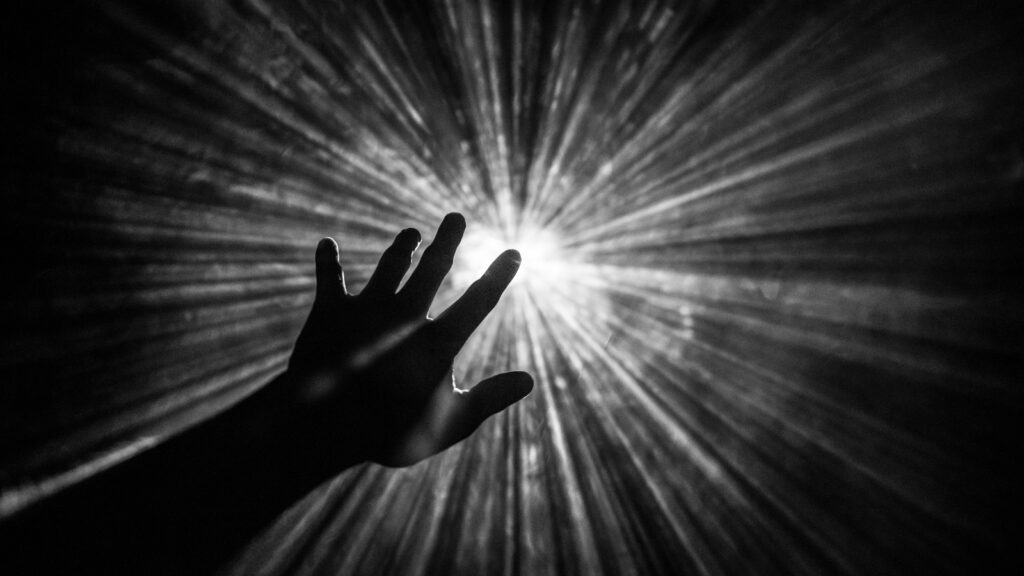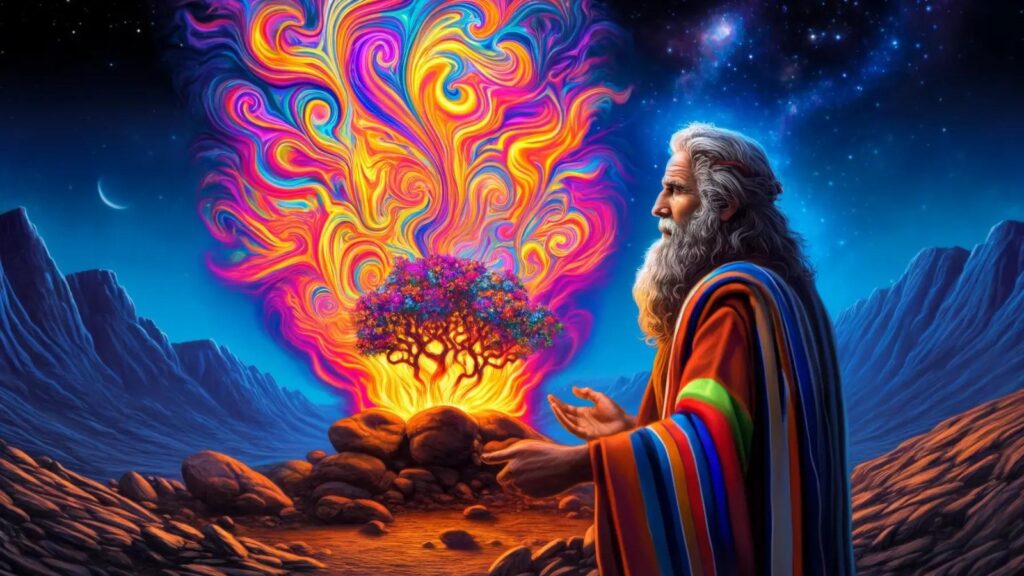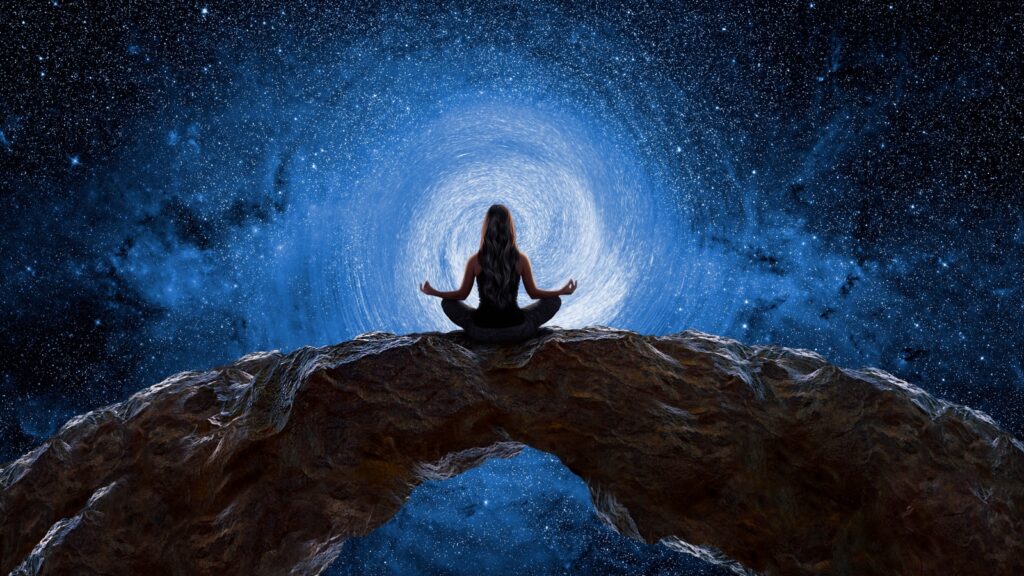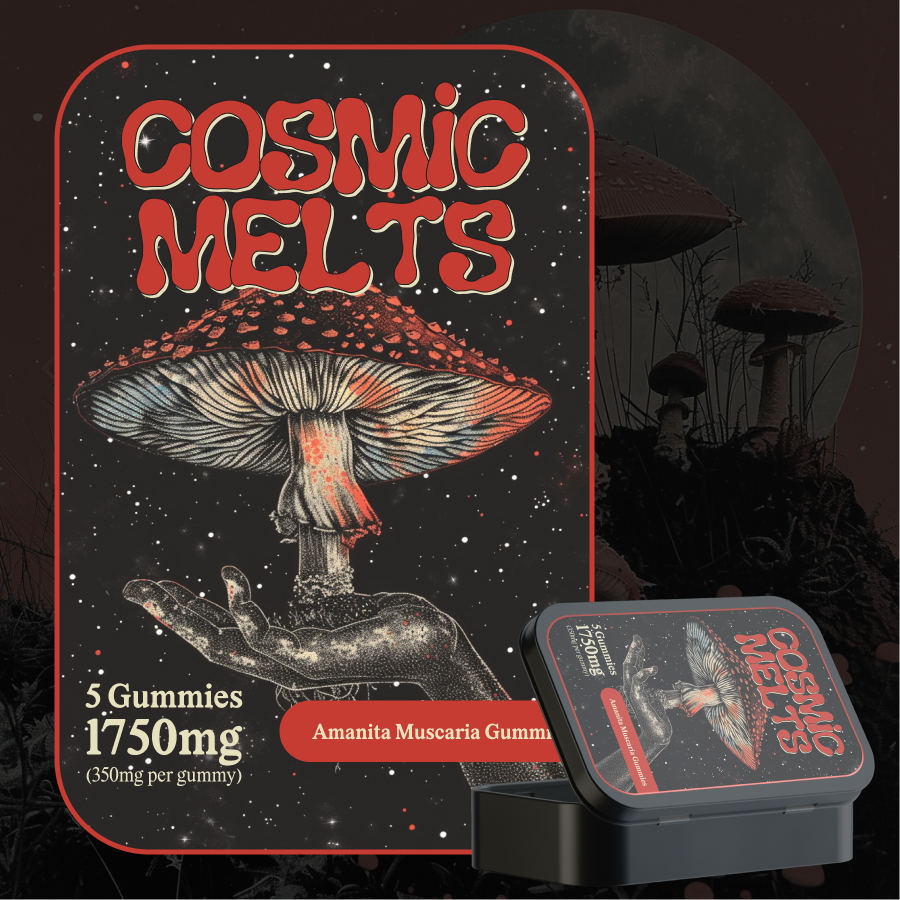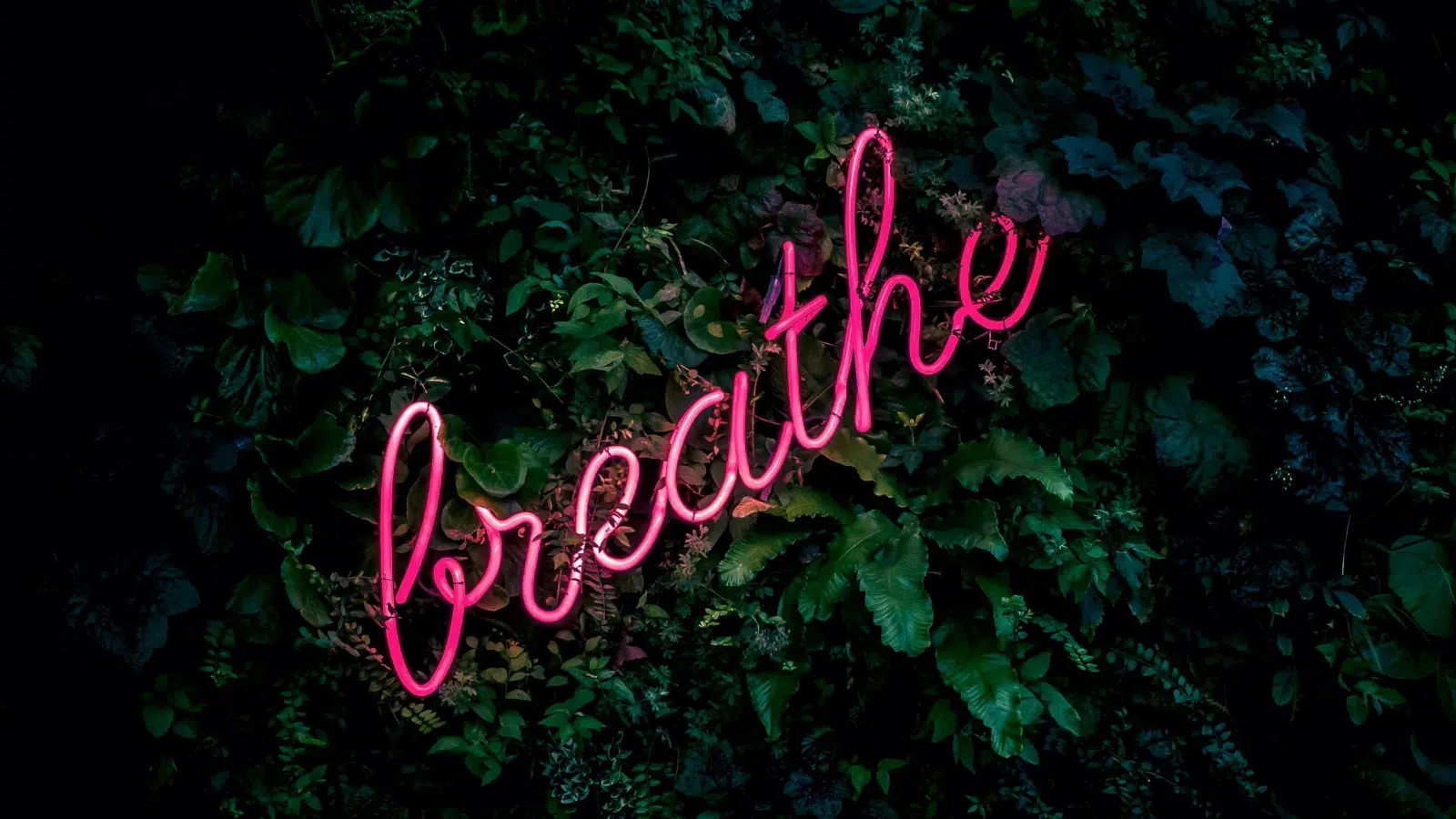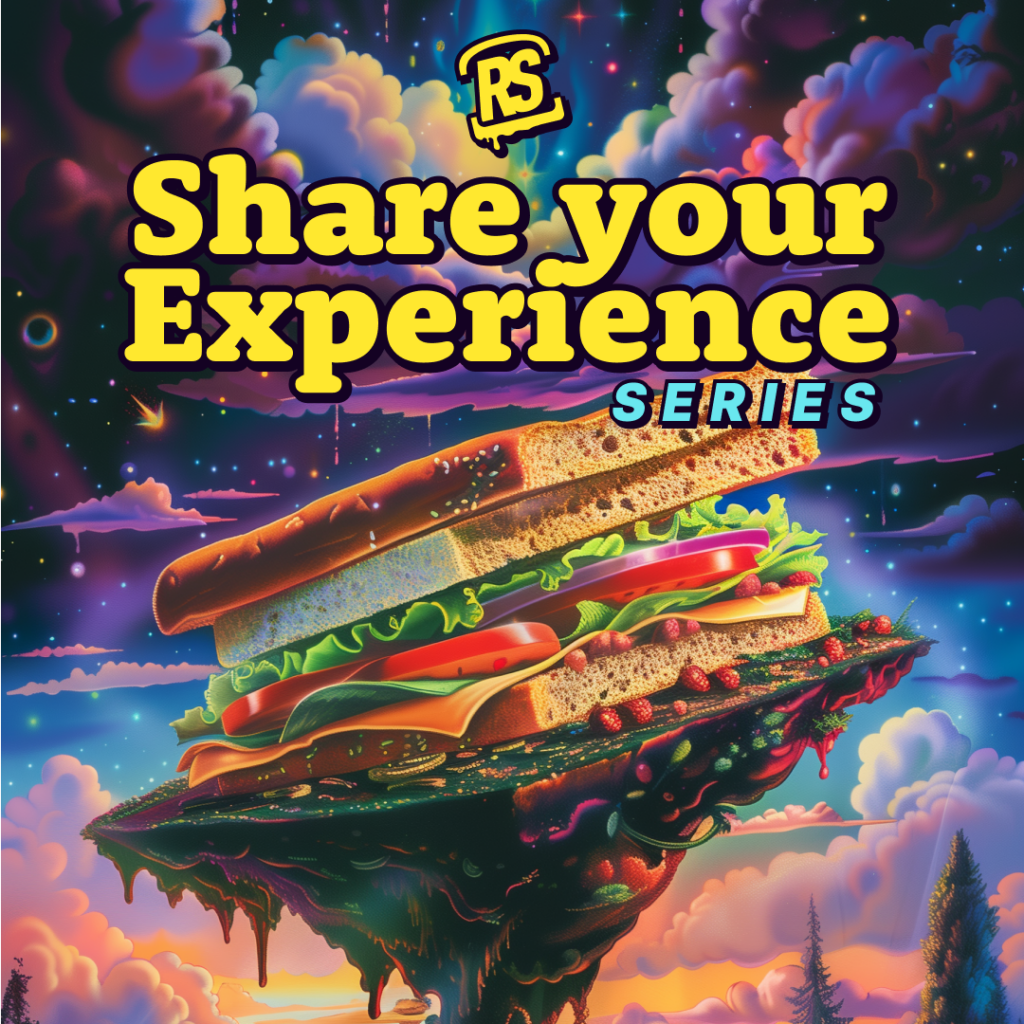The following article was originally published on Medium.
Unlike the rest of the world, I didn’t see the Star Wars flick, The Force Awakens, until three months after its release. While the film certainly made a flight from Canada home to NYC much more enjoyable, more importantly it left me with some questions related to my recent studies in the science of consciousness: Why do the Jedi always triumph in Star Wars films? Why are they always terribly disorganized and leading oppressive lives at the beginning of the saga, yet victorious and exalted by the end? What social narrative is at play that allows rag tag teens to turn into self-realized warriors of the Force? How do the Jedi leverage their minds over matters of the Dark Side?
If you ask today’s Jedi of quantum biology, the case can be made that your response is how matter means.
WTF am I talking about?
Basically, our will is limited to biologically structured pathways of perception since we can’t make choices without involving the physics of our bodies. The consequence is we can’t always, or even often, directly change the minds of others because our thoughts and actions have to go through their physical filters of perception. Yet, like Jedi, we existentially “always” have the freedom of mind to change our own sense of mind. While limited, this choice is essentially fundamental.

Enter “The Force.”
No matter the matter at hand, whether it be riding a bike or wielding a lightsaber, we can choose to either ‘react’ or ‘respond’ to our circumstances. Reacting means making no disruption to our physiological programming, while responding means consciously shaping the action we take.
The argument here is supple yet profound. Within the two words’ minute semantic differences, lies the fertile void of all humanity’s creativity. Reacting, or giving over to instinct, is the first step towards the Dark Side, while responding within a truthful manner begins the path to awakening the Force within us all.
Responsiveness, within all scales and organization of life, generates an opening — a “hole in the sky,” a space in time, a gap in reality — a possibilityto act freely, playfully, and skillfully where the Force can take root. Go back and watch the films (as if you needed an excuse), responsiveness is how every Jedi cultivates their inner life into courageous acts, the appreciation of elegance, and freedom from all and for all.
Just like in the movies, in our daily lives our wielding of the Force of response-ability can create new possibilities, or bring discordance and harm to the people in our lives. Even if we can’t predict our absolute impact on social or professional challenges; nonetheless we can always indirectly influence the conversations and behavioral trends around us by being more response-able. Part of the secret of the Force is that we “show up” better prepared for whatever we encounter in life. Every event becomes an opportunity to exercise our creative capacity, or skillfulness of response. This kind of responsiveness teaches us to tune into what’s true for ourselves, and eventually we become Jedi of making up our own minds.
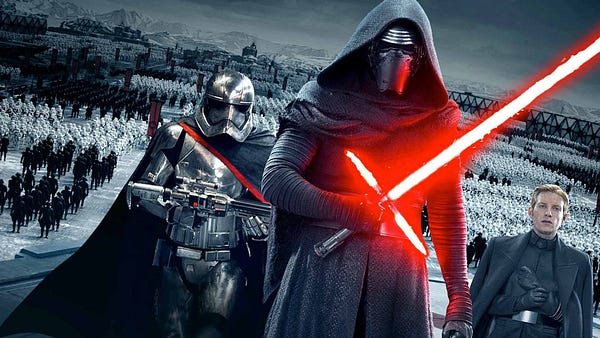
The interpretation of a meal, a dance, a movie, a date, or a book is completely based on your ability to hone your inner mental response. “Disappointment” is merely one possible outcome among many, whether you’re going for pizza, or to battle a Sith lord. Even if your hand gets sliced off like poor Luke Skywalker, you have the freedom of will to choose to respond joyfully, courageously, outrageously, submissively, elegantly, vengefully, or countless other ways.
Increased responsiveness unwraps the “gifts” of perception and sensation, so that creativity can mature into innovation; even in civic arenas. As co-founder of the U.S. Department of Arts & Culture, Adam Horowitz recently asked, “Creatively addressing our vast social, environmental, and economic crises and injustices is indeed a profound call to action, and one that requires that we cultivate social imagination — the capacity to conceive of what might be in our society. What public programs, civic rituals, and community institutions might we imagine that align our desire for belonging with our highest democratic ideals of equity, participation, and justice?”

Simply considering such possibilities opens our awareness enough to glimpse previously obstructed pathways towards a healthier and more flourishing world. In this way, responsiveness plays a crucial role in nourishing both individual and collective equity.
An individual or community’s ability to generate and value its relation to itself, as witnessed by the heroic efforts at Standing Rock, means that there’s an inherent grace in our reality to “play” within our fates, even amid society’s most dire events. However, it’s up to us to remain vigilantly aware of that grace, to cultivate our responsive agency, and to proactively create within it, rather than giving in to the Dark Side’s seductively constrained, essentially passive, states of blithe consumption, reductiveness, and reactiveness.
By exercising the conscious “muscle” of responding creatively to life’s unpredictability, a fundamentally liberating and empowering vista of human existence emerges. We can freely cope, adapt, and innovate our relationships to our experiences, rather than being oppressed by them. In other words: our Force within is real, and it can be awakened.

